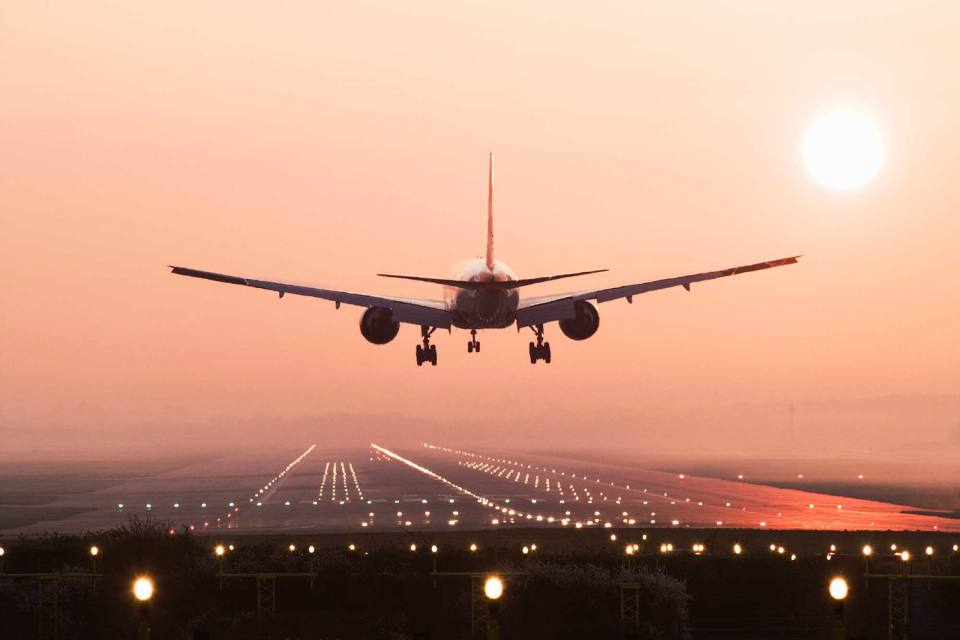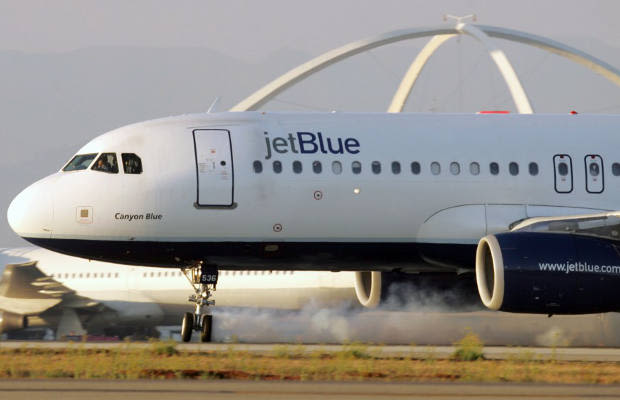Aerospace
5 Horrible dreams on flight..!!

Dreams…! are the successions of images, ideas, emotions and sensations that occur usually involuntarily in the mind during sleep.
Sometimes we usually think about what to dream? before we go to bed. But it may not happen to dream in the way we imagine. Because of the daily distractions like accidents, movies and sensible thoughts sometimes our dream becomes a breathtaking 3D horror movie without a director and a theatre.
This situation becomes horrible when we are above 35,000 ft over a sea. We bring here a few horrible dreams that you never dare to dream on flight..! So get ready to feel the dream…!
1. Hijacking:
This dream recalls the most terrifying incident of the world. Which is 2001, September 11 attack by Al-Qaeda-affliated extremists on twin towers of World Trade Centre USA. American Airlines Flight 11, United Airlines Flight 175, American Airlines Flight 77, United Airlines Flight 93, were hijacked on the morning on September 11 by Al-Qaeda-affliated extremists. Flight 11 and 175 were deliberately crashed into the twin towers of the World Trade Center, Flight 77 was crashed into the Pentagon and Flight 93 crashed into a field in Pennsylvania after hijackers crashed the plane due to a revolt by passengers. Both towers of The World Trade Center collapsed; in total 2,996 people, including the 19 hijackers, were killed and over 6000 people were injured. The attacks led to the War on terror.
Never dream of hijacking in today’s world. Security Industry flourished after the 9/11 attacks. After the incident need for security and its implementation was given the top priority.

Indian Airlines Flight 814
- Indian Airlines Flight 814 commonly known as IC 814 was an Indian Airlines Airbus A300 en route from Tribhuvan International Airport in Kathmandu,Nepal to Indira Gandhi International Airport in Delhi, India on Friday, 24 December 1999, when it was hijacked. Harkat-ul-Mujahideen, a Pakistan-based Islamic extremist group, was accused of the hijacking.
- Pan Am Flight 73, a Pan American World Airways Boeing 747-121, was hijacked on September 5, 1986, while on the ground at Karachi, Pakistan, by four armed Palestinian men of the Abu Nidal Organization.
Upgrading the security systems became the important measure for Airline Industry. Since the terrorist attacks occurred from hijacked airplanes, the airline industry had to establish new security measures to allow people to feel safe while flying. Immediately after the terrorist attack on the United States, President Bush provided twenty billion dollars for the upgrading of intelligence and security. These changes involved stricter background checks and the tougher security requirements on baggage checks.
2. Bird Strike:
Dreaming Bird strike and landing safely on water will bring back an incident occurred on January 15, 2009. Where US Airways Flight 1549 from LaGuardia to Charlotte/Douglas International Airport ditched into the Hudson River after experiencig a loss of both turbines. It is suspected that the engine failure was caused by running into a flock of geese at an altitude of about 975 m (3,200 feet), within short while after takeoff. All 150 passengers and 5 crew members were safely evacuated after a successful water landing.
The Federal Aviation Administration (FAA) estimates bird strikes cost US aviation 400 million dollars annually and have resulted in over 200 worldwide deaths since 1988. Most bird strikes involve large birds with big populations, particularly geese and gulls in the United States of America. There are three major approaches to reduce the effect of bird strikes. The vehicles can be designed to be more bird resistant, the birds can be moved out of the way of the vehicle, or the vehicle can be moved out of the way of the birds.
There are many countermeasures taken by the authorities which includes Vehicle designing, Wildlife management like Visual repellents, auditory repellents, tactile repellents, Habitat manipulation, Reinforcement, Population control etc. and Flight path.
3. Landing gear failure:
Haven’t dream’t of Landing gear failure? There are successful landings without a landing gear..!! The most popular landing with undercarriage malfunction dates back to September 21, 2005.
JetBlue Airways Flight 292 was a scheduled flight from Bob Hope Airport in Burbank, California to John F. Kennedy International Airport in New York City. On September 21, 2005, Captain Scott Burke executed an emergency landing the Airbus A320-200 at Los Angeles International Airport after the nose gear jammed in an abnormal position. No-one was injured.
Carrying 140 passengers and six crew, the Airbus A320-232 departed Burbank at 3:17 pmPDT (UTC-7). The aircraft, which was built in 2002, bore the tail number N536JB and the name “Canyon Blue”. It was scheduled to fly 2,465 miles (3,967 km) to John F. Kennedy International Airport.

pic courtesy : www.complex.com

pic courtesy : www.flismac.com
https://www.youtube.com/watch?v=8IBx02FI7rk
The National Transportation Safety Board (NTSB) report says that worn-out seals were to blame for the malfunction, and that the Brake Steering Control Unit (BSCU) system contributed to the problem. The NTSB reported that Airbus had since upgraded the system to take care of the problem.
4. Mid-air Collision:
One of the deadliest dream one should ever have is the Mid-air Collision. This dream will make us to remember the world’s deadliest mid-air collision which dates back to 12 November 1996, Charkhi Dadri mid-air collision.
The Charkhi Dadri mid-air collision occurred over the village of Charkhi Dadri, to the west of New Delhi, India. The aircraft involved were a Saudi Arabian Airlines Boeing 747-100B en route from Delhi to Dhahran, Saudi Arabia, and a Kazakhstan Airlines Ilyushin Il-76 en route from Chimkent, Kazakhstan, to Delhi. The crash killed all 349 people on board both planes, making it the world’s deadliest mid-air collision, the deadliest aviation accident to occur in India and the third-deadliest aircraft accident in the history of aviation, behind only the Tenerife airport disaster and Japan Airlines Flight 123.
In 2005, as part of an effort to reduce such military/civilian mid-air collisions in U.S. airspace, the Air National Guard Flight Safety Division, led by Lt Col Edward Vaughan, used the Disruptive Solutions Process to create the See and avoid web portal. In late 2006, the U.S. Defense Safety Oversight Council (DSOC) recognized and funded the site as its official civil/military midair collision prevention website, with participation by all the services.
5. Lightening strikes and turbulence:
Dreaming a lightning strike on our flight is heart-stopping situation where there are less chances of survival.

- On December 8, 1963, Pan Am Flight 214, a Boeing 707, crashed near Elkton, Maryland while en route from Baltimoreto Philadelphia, after being hit by lightning, killing all 81 on board.
- LANSA Flight 508 [1959] (Fatalities: 6 crew + 85 passengers )About forty minutes after take-off, the aircraft entered a zone of strong turbulence and lightning. After flying for twenty minutes in this weather at FL210 lightning struck the aircraft, causing fire on the right wing which separated, along with part of the left wing. The aircraft crashed in flames into mountainous terrain
- TWA Flight 891 was a Lockheed L-1649A Starliner that crashed not long after taking off from Milan Malpensa Airport on 26 June 1959. All 68 passengers and crew on board were killed.
Amateur video captured a lightning strike hitting a Delta Air Lines plane at the Atlanta airport.
(CNN)Lightning struck a Delta Air Lines plane in line for takeoff at Hartsfield-Jackson Atlanta International Airport on 20th August 2015 and it was all captured on amateur video. The recording shows rain drenching the airfield crowded with aircraft, waiting to take-off from the world’s busiest passenger airport. The lightning strikes the plane 18 seconds into the 36-second video.
Liked it ..!?
Share with your friends and Family

Aerospace
Boeing Transfers Rocket Stage to NASA, Paving Way for Human Moon Mission

Boeing has achieved a significant milestone by providing NASA with the second core stage of the Space Launch System (SLS) rocket.
This crucial component, crafted at NASA’s Michoud Assembly Facility (MAF), is set to propel the Artemis II crew into lunar orbit, marking humanity’s return to deep space after a 50-year hiatus.
The monumental Boeing-built rocket stage, the largest element of the Artemis II mission, will embark on a journey aboard the Pegasus barge, traveling 900 miles to NASA’s Kennedy Space Center.
Comparison of two legendary aircraft B777x vs B747 aircraft:Click here
Upon arrival, it will be meticulously integrated with other essential Artemis II components, including the upper stage, solid rocket boosters, and NASA’s Orion spacecraft within the iconic Vehicle Assembly Building. This intricate integration process is a vital step toward the eagerly anticipated Artemis II launch, slated for 2025.
“Boeing-built products helped land humankind on the moon in 1969, and we’re proud to continue that legacy through the Artemis generation,” remarked Dave Dutcher, vice president and program manager for Boeing’s SLS program. “Together, with NASA and our industry partners and suppliers, we are building the world’s most capable rocket and paving the way to deep space through America’s rocket factory in New Orleans.”
NASA, Lockheed Martin Reveal X-59 Quiet Supersonic Aircraft:Click here
The delivery of Core Stage 2 marks a significant achievement in the evolution of the SLS rocket. Towering over 200 feet and powered by four RS-25 engines, this core stage, coupled with two solid-fueled booster rockets, will generate a staggering 8.8 million pounds of thrust. This immense power is crucial to launching Artemis II and future missions into the vast expanse of space.
The SLS rocket stands unparalleled in its capability to transport both crew and substantial cargo to the moon and beyond in a single launch. Its extraordinary capacity will facilitate the delivery of human-rated spacecraft, habitats, and scientific missions to destinations including the moon and Mars, ushering in a new era of space exploration.
-

 Travel1 week ago
Travel1 week agoAir India to Expand US Operations with Three New Routes After a Decade
-

 Travel2 weeks ago
Travel2 weeks agoWhy We Should Avoid These Stamps in a Passport
-

 Airlines1 month ago
Airlines1 month agoInvestigations Reveal Fake Chinese Titanium in Boeing and Airbus Jets
-

 Tech4 weeks ago
Tech4 weeks agoChina’s CATL Plans 1,800-Mile Electric Plane Launch by 2027
-

 Airport3 days ago
Airport3 days agoTop 10 Largest Airports in the World by Size
-

 Aerospace4 weeks ago
Aerospace4 weeks agoChina’s Fighter Jets Turn Wings into Autonomous Drones
-

 Airlines4 days ago
Airlines4 days agoAir India Rolls Out A350s for Delhi-New York JFK and Newark Routes
-

 Defence3 weeks ago
Defence3 weeks agoBoeing Enhances Chinook with New Engines and Block II Upgrades at $96 Million







